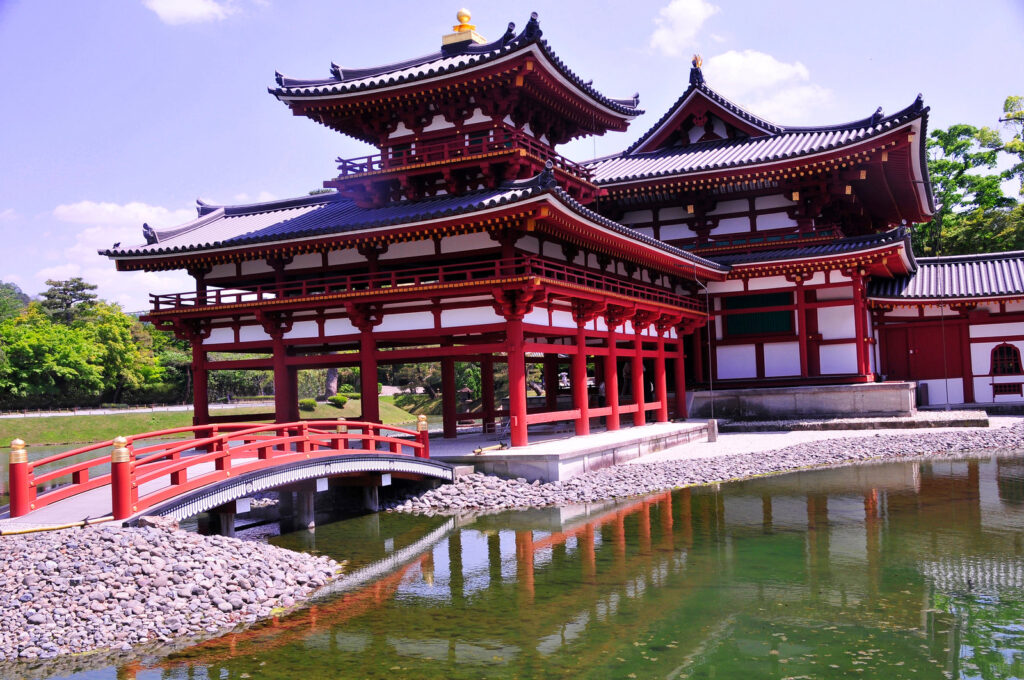Nestled in the heart of Kyoto, the Katsura Imperial Villa stands as a testament to the elegance and simplicity of traditional Japanese architecture. Built in the 17th century, this villa is renowned for its exquisite gardens and meticulously designed buildings that seamlessly blend with the natural surroundings. The villa’s design embodies the principles of wabi-sabi, celebrating imperfection and transience. The use of natural materials like wood and bamboo, along with the incorporation of sliding doors and tatami mats, creates a serene and harmonious atmosphere.
The gardens of Katsura Imperial Villa are a masterclass in Japanese landscaping. Designed with careful attention to the changing seasons, they offer a breathtaking display of cherry blossoms in spring and vibrant foliage in autumn. The garden paths are laid out to provide visitors with ever-changing views, ensuring that each step reveals a new perspective. The meticulous placement of stones, trees, and water features creates a sense of harmony with nature, inviting visitors to pause and appreciate the beauty around them.
My visit to Katsura Imperial Villa was an unforgettable experience. The tranquility of the gardens, coupled with the intricate craftsmanship of the buildings, left me in awe. As I strolled through the pathways, I couldn’t help but appreciate the attention to detail that went into every aspect of the villa’s design. The way the architecture complements the natural landscape is a true masterclass in Japanese aesthetics. The villa’s interior is equally impressive, with each room offering a unique view of the gardens, blurring the lines between indoor and outdoor spaces.
The history of Katsura Imperial Villa is as fascinating as its design. Commissioned by Prince Hachijo Toshihito, the villa was intended as a retreat from the bustling city life of Kyoto. The prince’s vision was brought to life by master craftsmen who employed traditional techniques to create a space that embodies the essence of Japanese culture. Over the centuries, the villa has hosted numerous dignitaries and has become a symbol of Japan’s rich architectural heritage.
One of the most striking features of Katsura Imperial Villa is its use of shoji screens. These delicate paper screens filter light, creating a soft, ethereal glow that enhances the serene atmosphere. The screens also serve a practical purpose, providing privacy while allowing for the flow of air, essential in Japan’s humid climate. The simplicity of the shoji screens is a testament to the Japanese philosophy of finding beauty in everyday objects.
The villa’s tea house is another highlight, offering a glimpse into the art of the Japanese tea ceremony. The tea house is designed to be a place of contemplation and reflection, with every element carefully chosen to enhance the experience. From the rustic tea bowls to the carefully arranged flowers, each detail contributes to the overall aesthetic, creating a sense of calm and tranquility.
The Katsura Imperial Villa is not just a historical monument but a living testament to the enduring appeal of Japanese architecture. Its design principles continue to influence modern architects, who draw inspiration from its simplicity and harmony with nature. The villa serves as a reminder of the importance of preserving cultural heritage and the timeless beauty of traditional design.
Visiting Katsura Imperial Villa is a journey through Japan’s architectural past, offering a unique insight into the country’s rich cultural heritage. The villa’s blend of natural beauty and meticulous craftsmanship makes it a must-visit destination for anyone interested in architecture and design. Through my blog, I aim to share the beauty and significance of places like Katsura Imperial Villa, encouraging others to explore and appreciate Japan’s rich architectural heritage.

